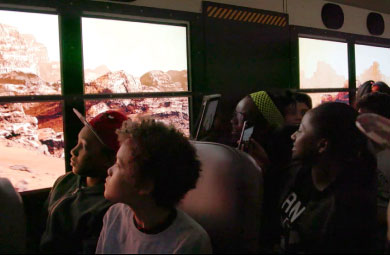
Gen Z and Gen Alpha want brands that understand their passions
Understanding where young audiences spend their time is helpful but understanding passions forms deeper brand audience relationships.
Tangible storytelling


One of my earliest memories is of stealing petals from the neighbour’s garden to make perfume. Certain roses still remind me of slowly fermenting jam jars and playing in my old house and garden. More often than not our memories are made from experiences and not things. A great experience is the ability to touch lives both physically and emotionally. How do brands evoke these very human reactions?
Virtual Reality is a bit like stepping into someone else’s memory. Unlike a linear film the viewer gets to look around and choose their own path. At the beginning of the year The New York Times gave away 1.3 million Google Cardboard headsets to their subscribers. The Displaced, a VR film about three refugee children, allowed readers to engage with the story in a much more immersive and memorable way. NYT VR was the newspaper’s most quickly adopted app and the average engagement time was a huge 6 minutes.
New immersive technology is pushing the boundaries of classroom learning. On the YouTube Beach festival goers could try out Google Expeditions, new VR tools that allows teachers to transport pupils under the sea or into space.
Experience isn’t just about the technology. We wrote about the partnership between the Art Institute of Chicago and Airbnb in last month’s BITE: a collaboration that gave customers a unique and personal brand experience, and created a huge amount of PR.
Customers are consuming more media than ever before. There are hundreds of opportunities for brands to surprise and delight. So think about each touchpoint as an individual experience and aim to make every
moment memorable.
Read on for examples…
Lockheed Martin is an American aerospace company creating the technology that will take the first humans to Mars. They wanted to boost their profile by inspiring the first generation who will make that expedition.
Working with Framestore, they created technology that enabled transparent bus windows to transform into high-definition displays showing the landscape of Mars.
School children thought that they were taking an ordinary field trip, but using VR technology Lockheed Martin succeeded in taking them to the red planet.
As the bus went 30mph on Earth, it went 30mph on Mars. When the bus turned on Earth, it turned on Mars, giving the children the sense of actually being there.
This was the first ever group VR experience with no goggles and no headsets.
The campaign generated a vast amount of PR whilst also challenging the future of classroom learning.
Agency: McCann, New York



Panasonic had a seemingly impossible challenge - to start a conversation around electricity (something we all take for granted) and its real value to people. They did this by making the invisible visible. 21 analog batteries were charged in 21 different creative ways, using wit and imagination. There was cheerleader pom pom power, hamster power and even tangy fruit power. The unique batteries were sold on ordinary channels inspiring customers to share the stories on social media.
Agency: Dentsu INC, Tokyo

Gaming is about reaction, push a button and something happens. However, traditional gaming ads were one-way messages. To launch the new Tomb Raider game, Xbox created a bespoke endurance test that put gamers in control. Eight contestants stood in a specially designed billboard while fans controlled the weather conditions inside. The drama was live-streamed, receiving 32,000 comments in just one day.
Agency: McCann, London

People in Sweden didn’t believe that the discount food in Lidl lives up to the highest standards. So Lidl adopted a bold strategy to hijack the most exclusive dinner in the world, the Nobel Prize Award Dinner, an event watched live by millions of people around the world. The brand put on their own banquet for the general public, Le Bon, which mirrored every detail of the Nobel dinner and was even broadcast live on a parallel TV channel. The event gained wide-spread PR coverage and saw Lidi sales increase by 6.71%, compared to the same period the previous year.
Agency: Ingo, Stockholm

Looks like you need to create a Creativebrief account to perform this action.
Create account Sign inLooks like you need to create a Creativebrief account to perform this action.
Create account Sign in